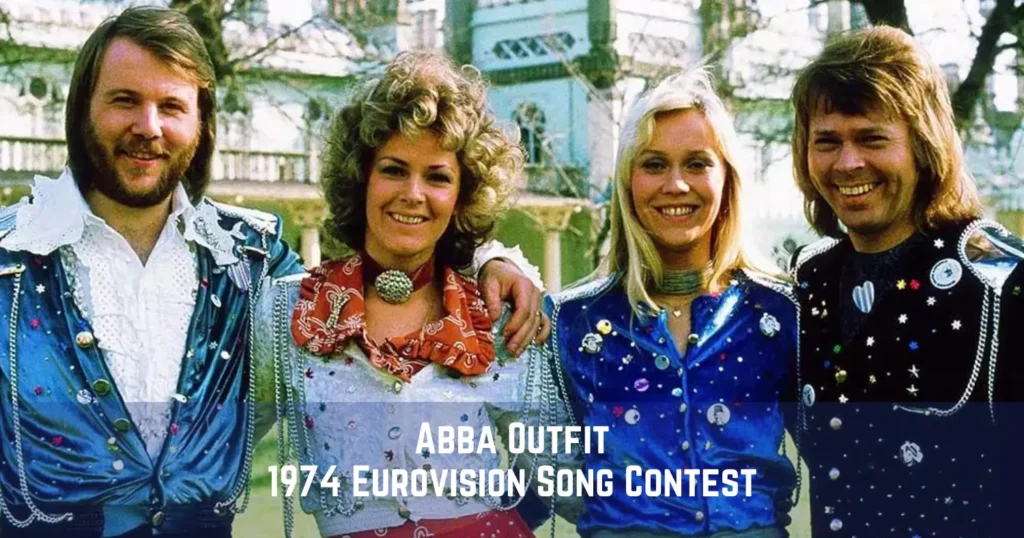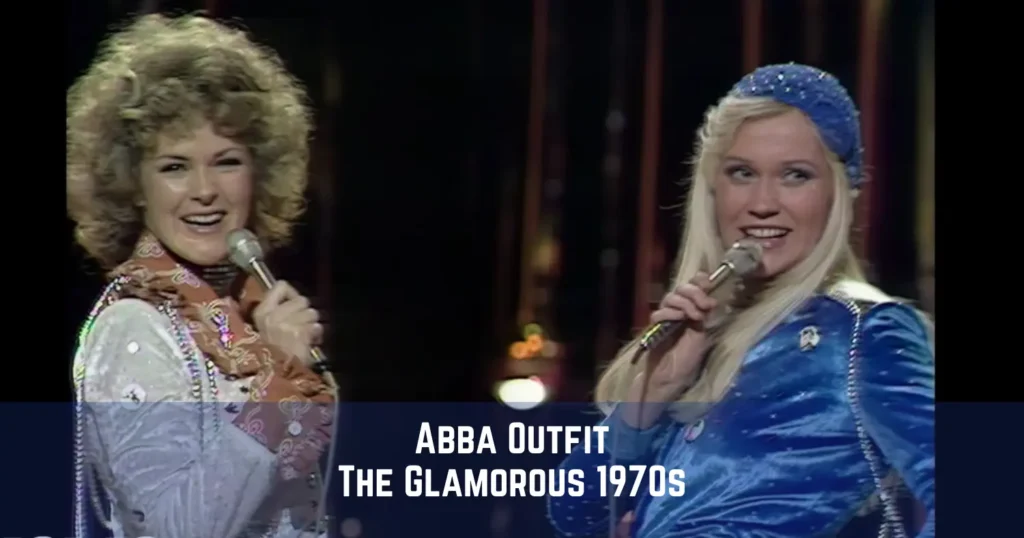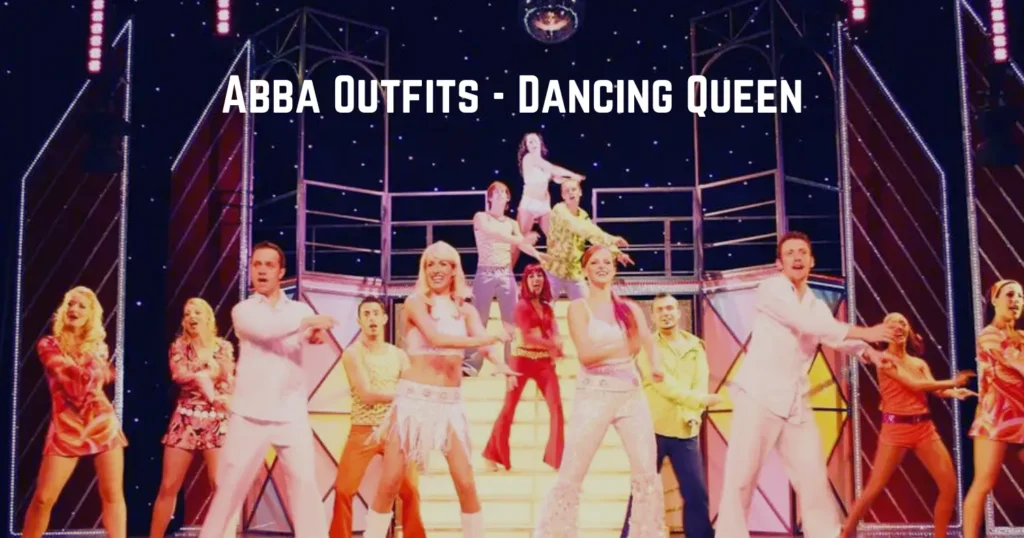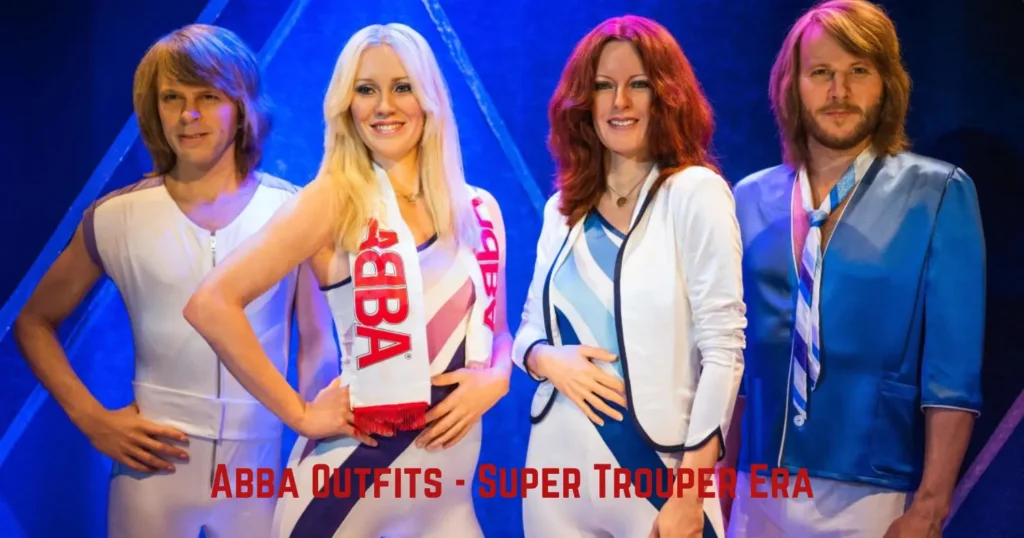Iconic Abba Outfits: A Journey Through Their Most Memorable Looks

Abba, the Swedish pop sensation, is renowned not only for its hit songs but also for its iconic outfits. Their fashion, from early performances to dazzling stage looks in the 1970s and 80s, became almost as legendary as their music. Each costume marked a different era and helped establish Abba as one of the most stylish bands in pop history.
In this blog post, we’ll explore some of Abba’s most memorable outfits. We’ll look at how their fashion evolved and how these Abba outfits helped shape their image. From the sparkly ensembles at Eurovision to the glamorous stage costumes of their later years, we’ll celebrate the fashion choices that made Abba a pop culture phenomenon. Join us as we revisit the stunning outfits that continue to impress fans worldwide.
1. The Early Days
Outfit 1: The Initial Stage Costumes
Abba’s rise to fame started with their memorable first stage outfits, which played a crucial role in creating their unique visual identity. In their early career, Abba’s outfits combined glam with practicality, designed to captivate audiences and match their growing pop appeal.

One of their first notable outfits was worn at the 1974 Eurovision Song Contest, where they made their breakthrough. These costumes were marked by a blend of glitter, sequins, and bold colors.
Agnetha Fältskog and Anni-Frid Lyngstad wore form-fitting dresses with rhinestones, while Björn Ulvaeus and Benny Andersson donned stylish suits. The women’s dresses featured asymmetrical necklines and flared skirts, and the men wore tailored blazers with flared trousers, reflecting the glam rock trends of the time.
These early outfits set the stage for Abba’s evolving style. The sparkling fabrics and vibrant colors became a signature of their image, reflecting their energetic music. These costumes were more than just clothing; they enhanced their stage presence and left a lasting impact on their audience.
As Abba’s fame grew, their fashion continued to evolve, mirroring changes in style and their status as pop icons. Nonetheless, these early costumes remain a testament to their original style and the start of their legendary fashion journey.
The Glamorous 1970s
Outfit 2: The Eurovision Song Contest 1974
Abba’s victory at the Eurovision Song Contest in 1974 was a turning point in their career, and their costumes were key to making a lasting impression. The band’s Abba outfits for this event exemplified 1970s glam rock fashion, blending flamboyance with a touch of elegance.

Agnetha Fältskog stood out in a shimmering blue dress with a high neckline and dramatic puffed sleeves. The dress was decorated with intricate beading and sequins, catching the stage lights and epitomizing 1970s glamour. Her look was completed with matching blue shoes and a sleek, straight hairstyle, enhancing her radiant appearance.
Anni-Frid Lyngstad wore a striking white dress that contrasted beautifully with Agnetha’s blue ensemble. The dress had a deep V-neckline and a flowing, floor-length skirt that created an elegant silhouette. Metallic accents and sequins added a contemporary edge to the white fabric. Anni-Frid’s voluminous waves further added to the drama of her look.
Björn Ulvaeus and Benny Andersson complemented the women’s outfits with their own stylish choices. Björn wore a light blue suit with a flared jacket and trousers paired with a sequined shirt that mirrored the sparkle of the women’s dresses. Benny opted for a fitted jacket with a subtle sheen, matching trousers, and a stylish shirt, reflecting the same glitzy theme.
Significance of These Outfits in Launching Their International Fame
The Eurovision Song Contest 1974 was pivotal not only for Abba’s music but also for their fashion. The extravagant and eye-catching Abba outfits helped establish their image as a glamorous and dynamic group, perfectly aligned with the flamboyant 1970s.
The visual impact of their costumes, coupled with their energetic performance, captured the attention of audiences across Europe and beyond. This combination of fashion and performance was crucial in propelling Abba to international stardom, making them one of the most recognizable bands of the decade.
These outfits became iconic symbols of Abba’s early success and set a high bar for their future fashion. The blend of sparkle, sophistication, and theatricality in these costumes showcased their commitment to a memorable stage presence, solidifying their place in pop culture history.
[Include photos of the Eurovision 1974 costumes here, highlighting the glamour and detail of each outfit.]The Glamorous 1970s
Outfit 3: The “Dancing Queen” Era
Analysis of Their Outfits During the “Dancing Queen” Era
The “Dancing Queen” era is one of the most iconic periods in Abba’s career, marked by vibrant and glamorous Abba outfits that perfectly matched their hit music. Released in 1976, “Dancing Queen” became one of their most famous songs, and the outfits from this time are just as memorable.

Description of the Flashy, Glamorous Designs and Materials
During this era, Abba embraced a bold and flashy style, with costumes designed to dazzle and captivate.
Agnetha Fältskog was often seen in dazzling jumpsuits and dresses. Her outfits featured plunging necklines and high slits, covered in gold and silver sequins that shimmered with every move. The bold colors and shiny materials made her a standout performer on stage.
Anni-Frid Lyngstad wore glamorous floor-length dresses and jumpsuits in vibrant colors and eye-catching patterns. Her outfits included dramatic bell sleeves and high collars, creating a striking and theatrical silhouette.
Björn Ulvaeus and Benny Andersson complemented the women’s outfits with stylish suits. Björn wore fitted jackets with sequined lapels and trousers that matched the extravagant styles of his bandmates. Benny’s wardrobe featured similarly glamorous designs, with tailored suits and shirts reflecting the band’s overall aesthetic.
Impact of These Outfits on Their Stage Presence and Public Image
The flashy and glamorous Abba outfits of the “Dancing Queen” era significantly shaped Abba’s public image. The costumes enhanced their performances, adding visual excitement that matched their upbeat music.
The band became known for their stylish and extravagant looks, solidifying their status as pop icons of the 1970s. Their stage presence was heightened by these bold designs, making their performances unforgettable.
The combination of sparkling materials, vibrant colors, and dramatic cuts made Abba’s fashion synonymous with their music, leaving a lasting impression on fans and securing their place in pop culture history.
The 1980s Evolution
Outfit 4: The “Super Trouper” Tour
Description of the Outfits from the “Super Trouper” Era
The “Super Trouper” era marked a significant shift in Abba’s fashion sense, reflecting the evolving trends of the early 1980s. Released in 1980, the album “Super Trouper” not only showcased some of Abba’s most enduring hits but also introduced a new style in their stage outfits.

During this period, Abba’s costumes took on a more sophisticated and polished look compared to the flamboyant styles of the 1970s. Agnetha Fältskog and Anni-Frid Lyngstad were seen in elegant, tailored Abba outfits that combined classic cuts with modern embellishments. Agnetha’s wardrobe featured a mix of sleek, high-waisted trousers paired with fitted blouses and chic blazers. These outfits often included subtle metallic accents and streamlined silhouettes, reflecting the early 1980s penchant for both glamour and restraint.
Anni-Frid’s attire during the “Super Trouper” tour included long, flowing skirts and fitted tops with intricate detailing. Her outfits often featured elegant draping and soft, pastel colors, offering a contrast to the more vibrant styles of previous years. The understated glamour of her costumes highlighted her grace and poise on stage.
For Björn Ulvaeus and Benny Andersson, the “Super Trouper” era brought a more refined and stylish approach to their wardrobes. Björn’s outfits included tailored suits with narrow lapels and high collars paired with dress shirts and neckties. Benny’s fashion choices followed a similar trend, featuring sharp, fitted suits and crisp shirts that complemented the band’s overall polished look.
How Fashion Reflected the Evolving Trends of the Early 1980s
The fashion of the “Super Trouper” tour mirrored the early 1980s trend towards elegance and sophistication. The era was characterized by a move away from the flashy, extravagant styles of the 1970s towards a more refined and stylish aesthetic. Abba’s outfits from this period embraced this shift, featuring cleaner lines, high-quality fabrics, and a more understated approach to glamour.
The use of tailored suits and sleek silhouettes in their costumes reflected the broader fashion trends of the time, which favored classic, elegant designs over the more flamboyant styles of previous years. The inclusion of subtle metallic accents and sophisticated color palettes in their outfits showcased the band’s ability to evolve with the changing fashion landscape while maintaining their signature style.
The Role of These Outfits in Their Live Performances
The outfits from the “Super Trouper” tour played a crucial role in enhancing Abba’s live performances. The sophisticated and polished designs contributed to the band’s stage presence, allowing them to project an image of elegance and professionalism. The refined costumes complemented their music, providing a visual representation of their evolving sound and style.
The subtle glamour of their outfits allowed the band to connect with their audience in a more intimate and personal way, showcasing their growth as performers and their ability to adapt to changing trends. The “Super Trouper” costumes remain a testament to Abba’s enduring appeal and their commitment to delivering memorable performances.
Conclusion
Abba’s iconic outfits have become an integral part of their legacy, with each era of their fashion reflecting the evolution of their music and public image. From their early glam rock costumes to the sophisticated styles of the “Super Trouper” era, their outfits have contributed to their status as pop icons.
These Abba outfits not only defined their era but also continue to influence fashion and pop culture today. As we look back on their most memorable looks, we celebrate the impact of their style on their music and their enduring appeal as one of the most iconic bands in history.
Final Thoughts
The evolution of Abba’s outfits tells a story of their journey through pop culture and fashion. From the sparkly beginnings of their career to the elegant sophistication of their later years, their costumes have played a significant role in shaping their image and legacy.

